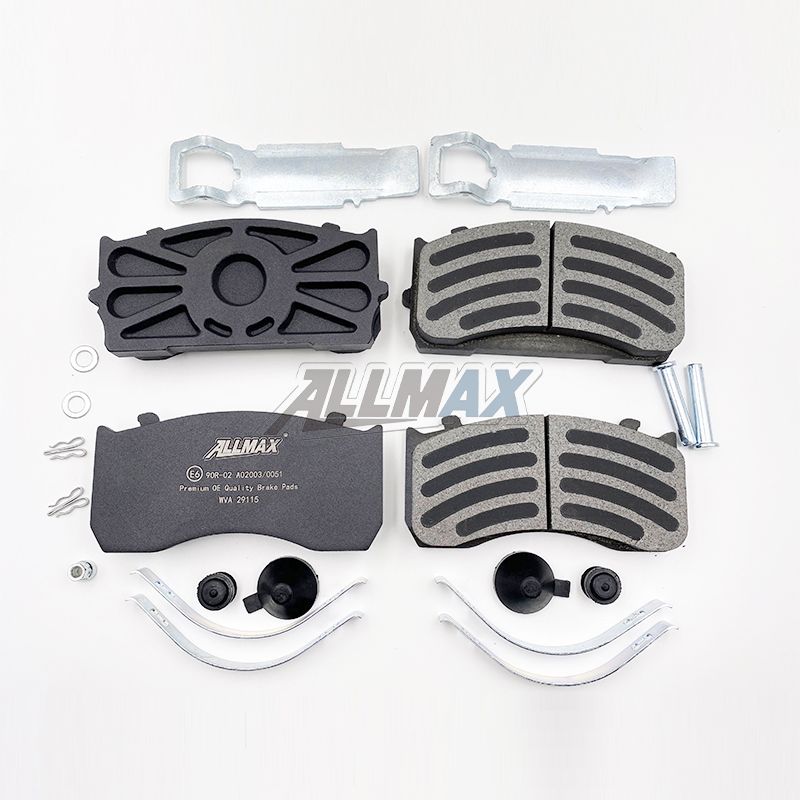In the realm of vehicular mechanics, precision is paramount. Every component plays a crucial role in ensuring the smooth operation and safety of a vehicle. Among these components, brake shoes and brake pads stand out as integral parts of the braking system. However, despite serving a common purpose, these two elements possess distinct characteristics and functionalities. In this comprehensive guide, we delve into the nuances that set brake shoes and brake pads apart, shedding light on their individual roles, materials, and applications.

Brake shoes represent a fundamental aspect of drum brake systems, a traditional braking mechanism employed in numerous vehicles. These curved metal components are strategically positioned within the brake drum. When the brake pedal is engaged, hydraulic pressure forces the brake shoes against the inner surface of the drum, generating friction and consequently slowing down or halting the vehicle.
Traditionally, brake shoes were crafted from asbestos, owing to its heat resistance and friction properties. However, in adherence to environmental and health regulations, modern brake shoes utilize alternative materials such as ceramic, organic compounds, or semi-metallic compounds. These materials offer improved performance while mitigating health risks associated with asbestos exposure.
Brake shoes find widespread application in vehicles equipped with drum brake systems, including older model cars and certain heavy-duty trucks. Despite the emergence of disc brakes as the predominant braking technology, brake shoes remain relevant in specific automotive configurations, particularly in the rear brake assemblies of some vehicles.
In contrast to brake shoes, brake pads play a pivotal role in disc brake systems, which have become standard in modern automobiles. Positioned within the brake caliper, brake pads exert pressure against the rotating brake rotor when the brake pedal is depressed. This action generates friction, facilitating the deceleration or stopping of the vehicle.
Similar to brake shoes, brake pads have undergone material advancements to enhance performance and safety. While early iterations often featured asbestos compositions, contemporary brake pads incorporate materials such as ceramic, semi-metallic compounds, or organic compounds. These materials offer superior heat dissipation, durability, and braking efficiency, ensuring optimal performance across diverse driving conditions.
Brake pads serve as primary components in disc brake systems, prevalent in most modern vehicles. Their versatility and effectiveness have rendered them indispensable in automotive engineering, with applications spanning passenger cars, sports utility vehicles (SUVs), trucks, and performance vehicles. Moreover, advancements in brake pad technology continue to refine braking performance, prioritizing safety and driver confidence.
While both brake shoes and brake pads contribute to vehicle braking, their performance characteristics vary significantly. Brake shoes, commonly associated with drum brake systems, excel in durability and longevity. Their design allows for effective heat dissipation, making them suitable for heavy-duty applications. Conversely, brake pads offer superior stopping power and responsiveness, particularly in high-performance driving scenarios. The direct contact between brake pads and brake rotors enhances precision and modulation, catering to the dynamic demands of modern driving.
In the realm of environmental sustainability, brake pads have garnered attention due to their composition and manufacturing processes. While asbestos-based brake shoes pose health and environmental hazards, modern brake pads incorporate eco-friendly materials, aligning with stringent regulations and consumer preferences for sustainability. As automotive manufacturers prioritize eco-conscious practices, the transition towards environmentally responsible brake pad formulations continues to accelerate, fostering a greener automotive landscape.
Effective maintenance is essential for preserving the integrity and performance of braking components. When considering Brake Pads vs Brake Shoes, maintenance requirements differ based on the braking system employed. Brake shoes demand periodic adjustments to maintain optimal clearance within the brake drum, ensuring consistent braking performance. In contrast, brake pads necessitate regular inspections for wear and tear, with replacement intervals dictated by driving habits, environmental conditions, and pad material composition.
In conclusion, while brake shoes and brake pads share the common objective of facilitating vehicle deceleration and stopping, their distinctions are evident in design, functionality, and application. Brake shoes remain synonymous with drum brake systems, offering durability and reliability in diverse driving conditions. Conversely, brake pads represent the pinnacle of braking technology, delivering unparalleled stopping power and responsiveness in disc brake configurations. By understanding the unique attributes of brake shoes and brake pads, drivers can make informed decisions regarding maintenance, replacement, and performance optimization, ensuring safe and efficient journeys on the road.
Copyright:@2020-2021
Comments Please sign in or sign up to post.
0
0 of 500 characters used